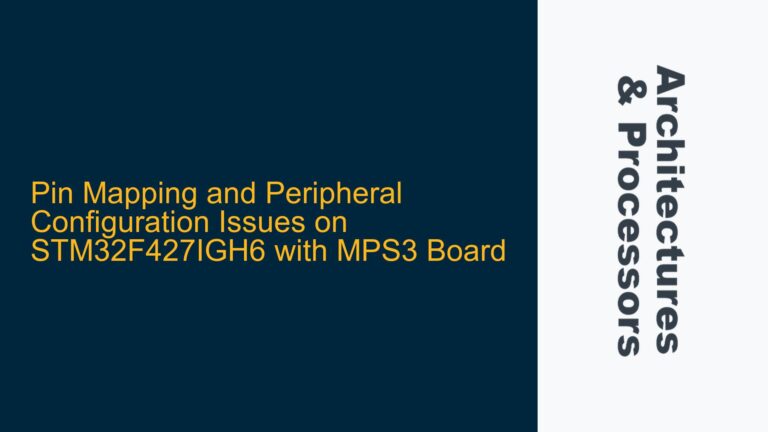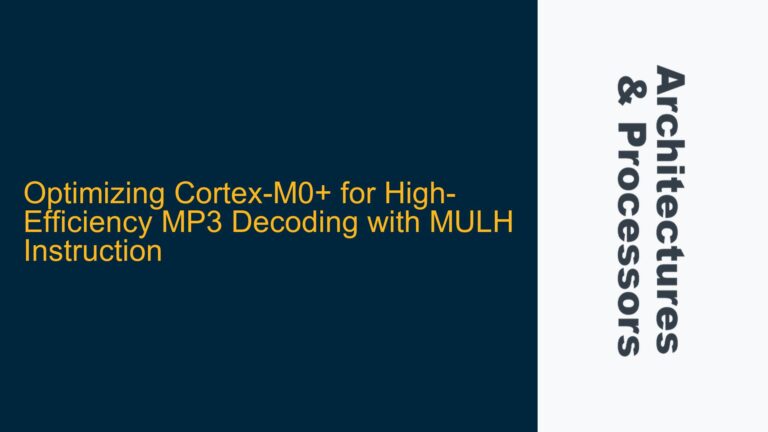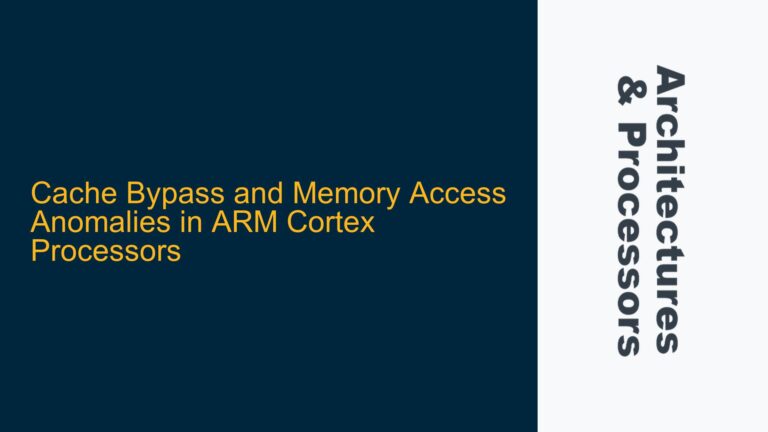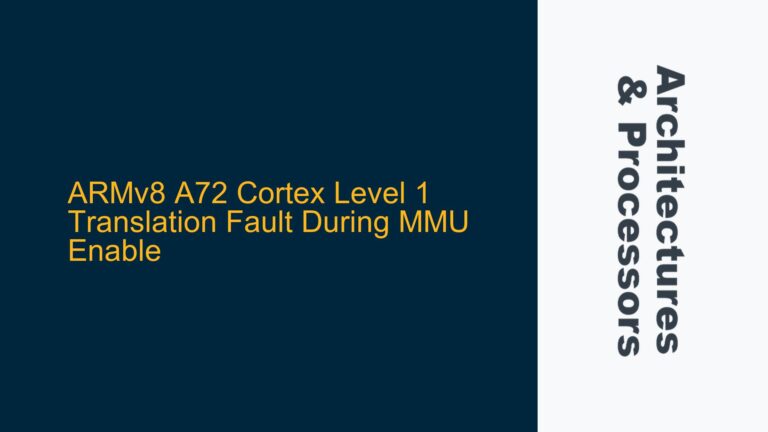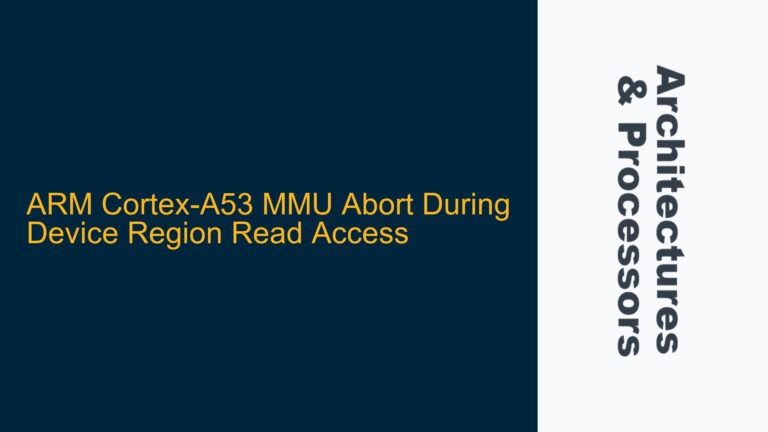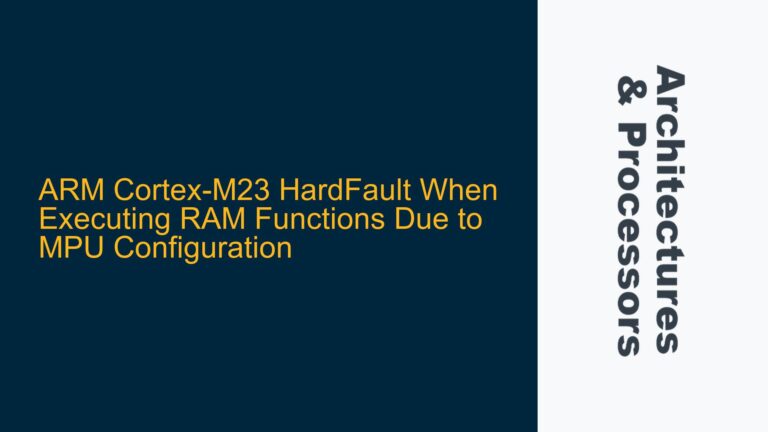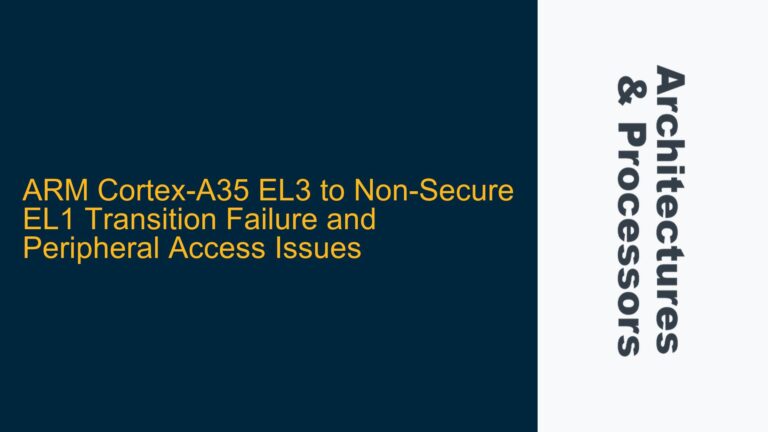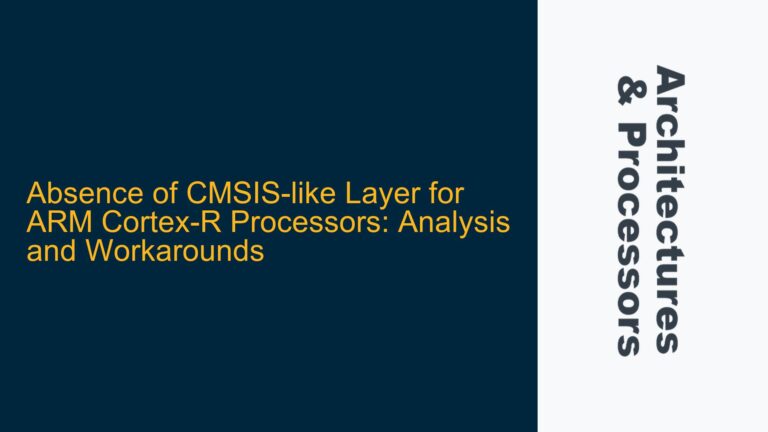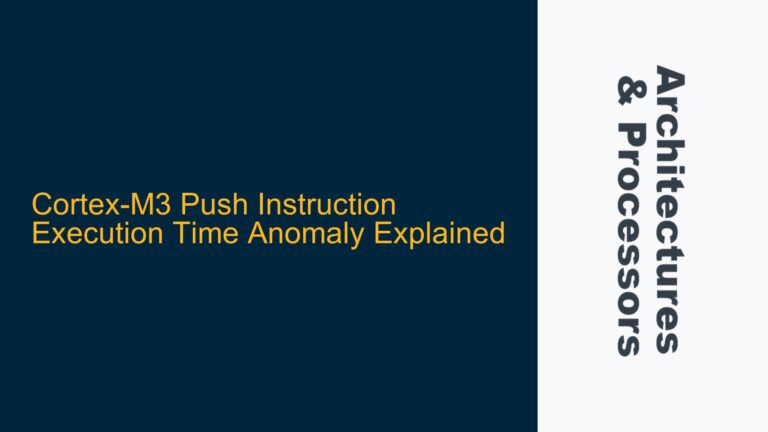Pin Mapping and Peripheral Configuration Issues on STM32F427IGH6 with MPS3 Board
STM32F427IGH6 Pin-to-Peripheral Mapping Challenges on MPS3 The STM32F427IGH6 microcontroller, when used with the ARM MPS3 development board, presents a unique challenge in mapping its internal peripherals to the physical pins of the board. This issue arises due to the lack of clear documentation that directly correlates the STM32F427IGH6’s pin functions with the MPS3 board’s interface….
